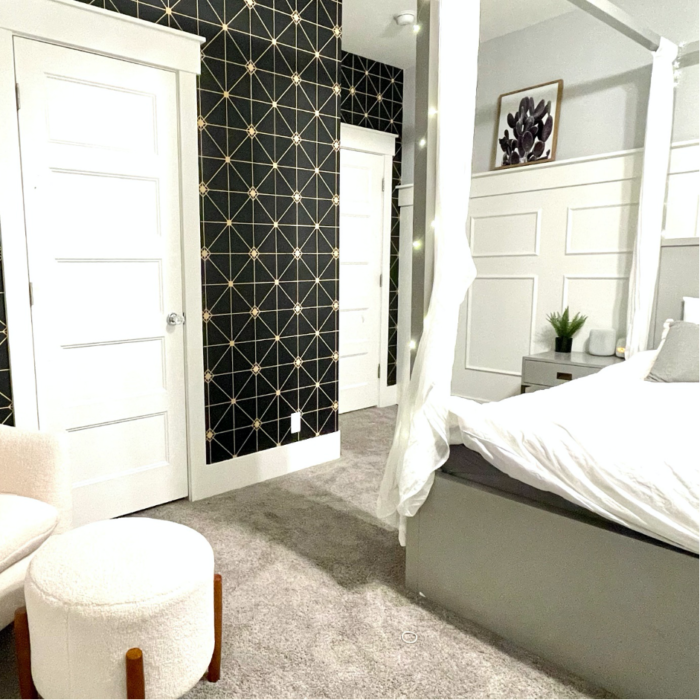 Introduction
Introduction
Throughout history, the art of interior design has been shaped by various elements, and among them, wallpaper has stood the test of time. From its origins in ancient civilizations to its current prominence in modern interiors, wallpaper has evolved beyond a decorative layer to become a captivating canvas that weaves together history, creativity, and design. In this article, we embark on a journey through the captivating world of wallpaper, exploring its historical relevance, its renaissance in contemporary art and design, and its role in shaping ambiance and sustainability.
The Historical Tapestry
Tracing its origins back to ancient cultures, wallpaper has a rich history that spans centuries. Originally conceived as a means of adorning walls, it evolved organically, with patterns and designs mirroring the cultural tapestry of each era. During the Renaissance, wallpaper emerged as a symbol of opulence, adorning the abodes of the elite. In the Victorian and Edwardian eras, it transitioned into a more democratic form of expression, adorning homes across social strata. Today, the timeless allure of wallpaper endures, bridging the gap between antiquity and the modern world.
The Contemporary Renaissance
In recent years, a renaissance of interest in wallpaper has taken hold, driven not only by nostalgia but by a fresh appreciation for its potential in modern design. Designers and artists have rediscovered wallpaper’s transformative power, recognizing it as a versatile tool to mold spaces and create immersive experiences. This revival is a fusion of history and modernity, a recognition that the past can be a wellspring of inspiration for contemporary innovation.
A Kaleidoscope of Design
Contemporary wallpaper designs are a vibrant reflection of diverse aesthetics. From the sleek lines of minimalism to the exuberant explosions of maximalism, wallpaper’s palette knows no bounds. Geometric precision, abstract expressions, and nature-inspired motifs intertwine in a symphony of design. The advent of digital technology has opened doors to a new realm of possibilities, enabling textures, colors, and visual effects that defy convention, offering an avenue for designers to push the boundaries of creativity.
Wallpaper as Art
The convergence of art and design finds its embodiment in the modern reimagining of wallpaper. Artists are leveraging wallpaper as an expansive canvas for their creativity, challenging traditional distinctions between visual art and interior design. Galleries and exhibitions are showcasing installations where wallpaper is more than mere backdrop – it becomes an immersive component that invites viewers to explore and experience the interplay of art and environment.
Crafting Atmospheres and Consciousness
Beyond its aesthetic appeal, wallpaper plays a pivotal role in crafting the atmosphere of a space. Vibrant patterns inject vitality, while subtler designs, and geometric wallpaper evoke calmness and serenity. This adaptability empowers interior designers to tailor spaces to specific moods and purposes. Moreover, in a world increasingly conscious of sustainability, wallpaper has embraced innovation, offering eco-friendly materials and techniques that harmonize aesthetics with environmental responsibility.
A Timeless Legacy
As this journey through the world of wallpaper draws to a close, one thing becomes evident – its allure is far from fleeting. Wallpaper’s rich legacy, from its ancient origins to its modern resurgence, serves as a testament to its enduring charm. In an ever-evolving design landscape, it remains a steadfast tool for artists and designers to create, express, and inspire. As we navigate the boundless realms of creativity, wallpaper’s narrative unfolds, solidifying its place as a timeless, adaptable, and captivating element in the ever-evolving tapestry of design.
Conclusion
The allure of wallpaper, with its rich history and timeless appeal, continues to captivate contemporary art and design. Its ability to transform spaces, convey artistic expression, and create immersive environments ensures that wallpaper remains a powerful tool in the hands of designers and artists. As we explore new possibilities and push creative boundaries, wallpaper’s journey from the past to the present solidifies its status as a versatile and enduring element in the world of design.
